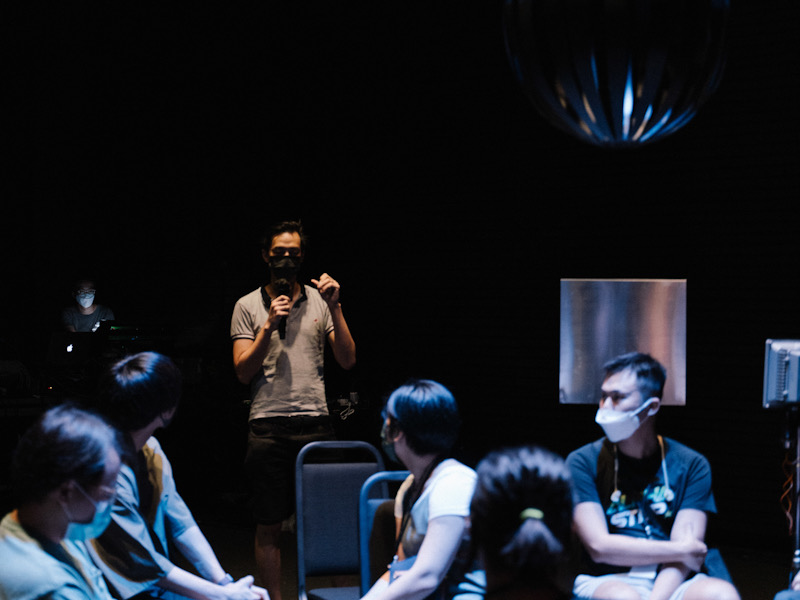
In September 2021, Freespace and the School of Theatre and Entertainment Arts at the Hong Kong Academy for Performing Arts launched the new project art TALKS tech as part of their collaborative platform TechBox. For this project, they invited artists Kenny Wong and Jacklam Ho and the TEA Student Ensemble – Allison Fong, Ian Tang and Yoyo Yau – to re-examine and revisit earlier works. In The Room at Freespace, audiences were able to experience the works and exchange thoughts with the artists as they explored ways of integrating art and technology.
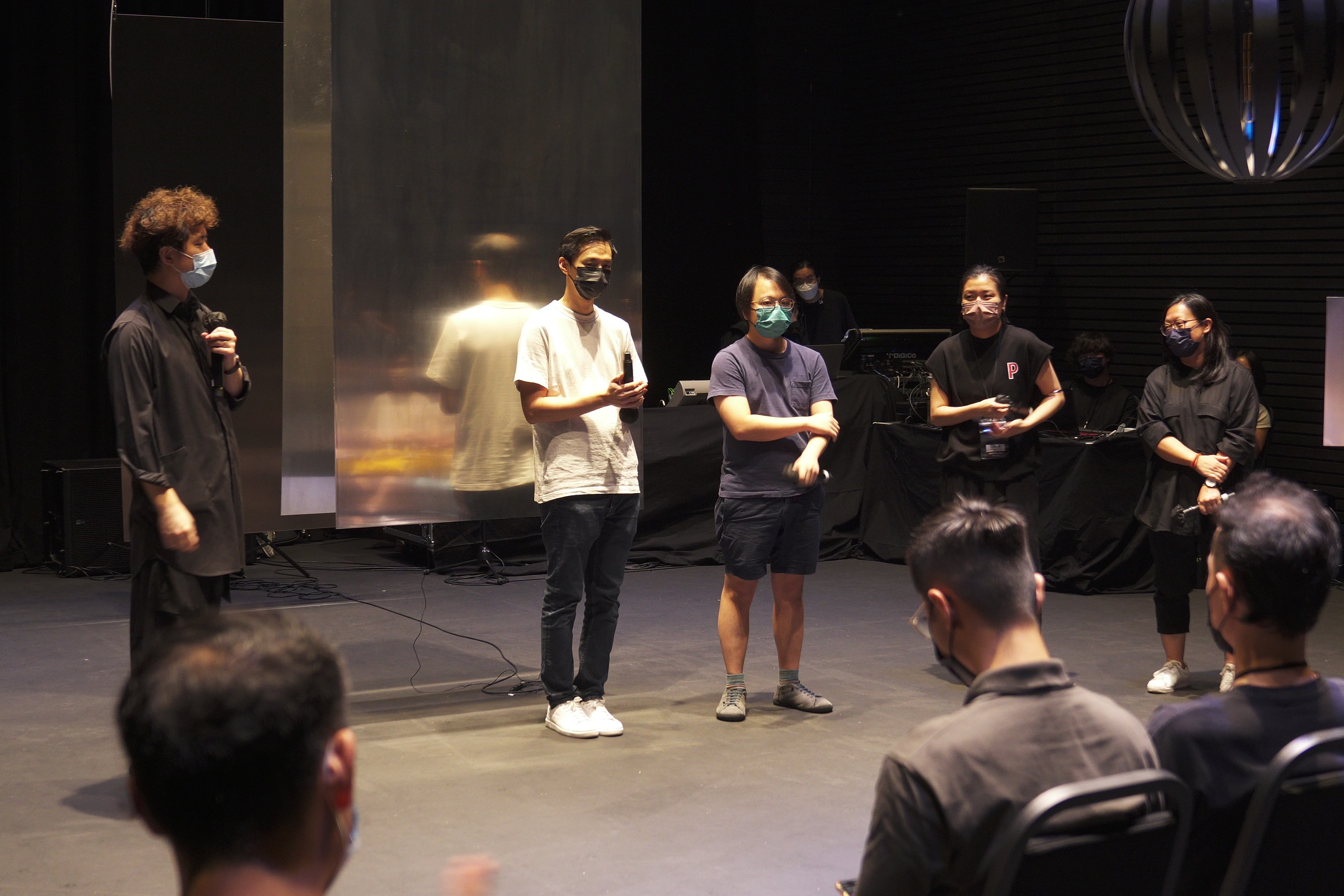
From dichotomy to dialogue
As the development of media technology accelerates, technological devices such as smartphones and computers have become an indispensable part of our daily lives. Nevertheless, media technology is still somewhat like a black box to us – we are clueless about the workings of the technology, how it operates, how it interacts with humans. As a result, when artists use media technology in their work, it can create a distance between the audience and the artwork. After all, the way we comprehend the brush strokes and style of a painting is very different from how we understand programme codes and computer algorithms.
The name “art TALKS tech” seems to imply that art can illustrate technology by itself. Indeed, through performance, exhibition and sharing, the events sought to offer an “illustration” of the artists’ works and their creation process. Unlike a traditional performance that emphasises the dichotomy between audience and artist, art TALKS tech highlighted the importance of interaction. Through discussion and exchange, both the audience and performers/artists gained insight into each other’s thoughts and opinions, as well as the creation process.
In events that involves humans and objects, artists have the chance to introduce related vocabulary and language – frequently used words such as “speed”, “structure” and “layers”, for instance, that come from mechanical technology. In the case of the TEA Student Ensemble, the artists were initially unsure how to apply certain terms to their improvised performances, as this is a skill rarely acquired in the classroom. However, through the space for experimentation and exchange with visitors who came to see their work, the team grew more comfortable using the relevant vocabulary to explain the creation process, the use of technology, and the context and ideas that gave birth to their work.
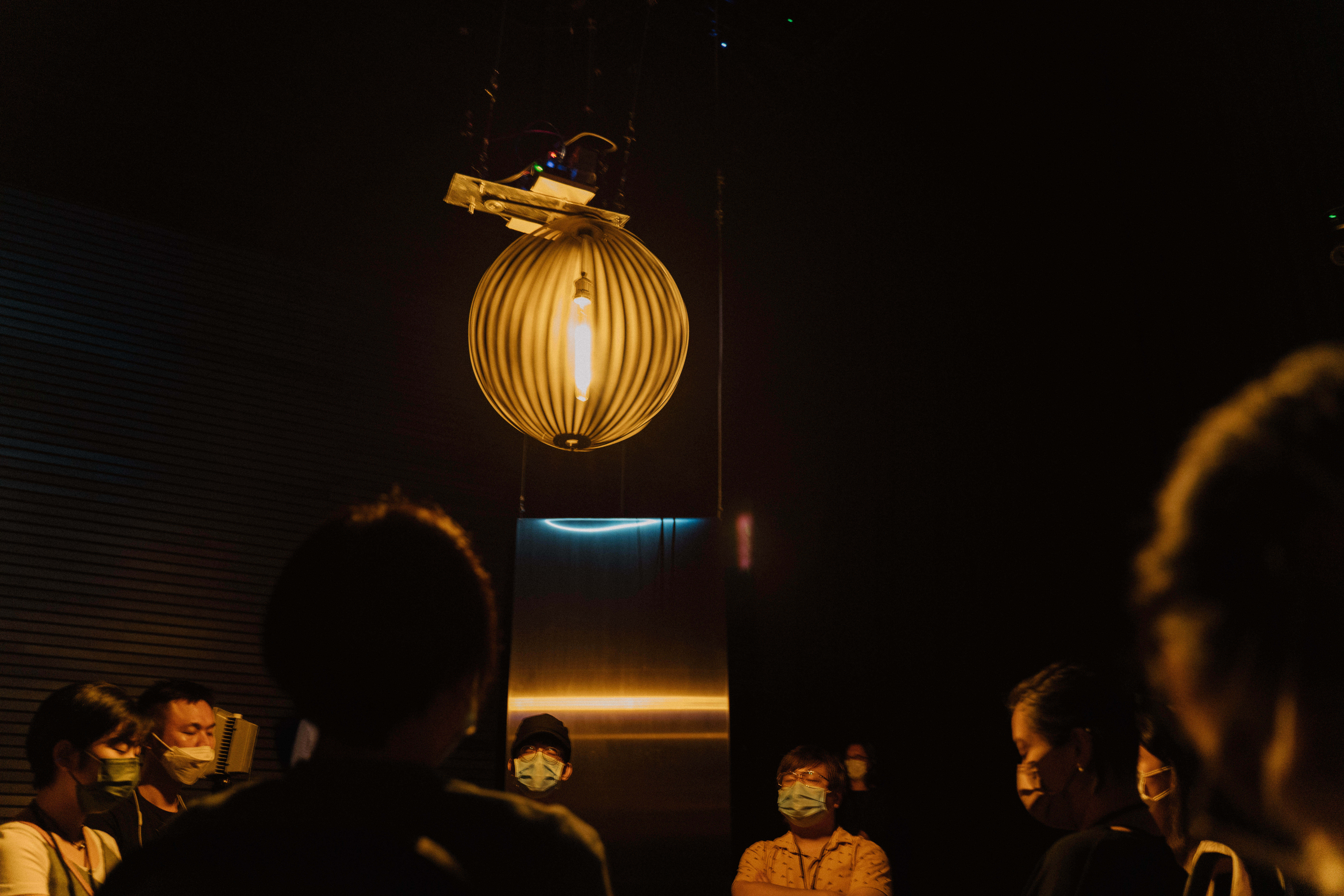
Inviting the audience into the creation circuit
Over the week of their event, the TEA Student Ensemble not only had in-depth conversations with the public, especially during the final performance, they also had close communication with the crew working front and backstage at the venue. According to the ensemble artists, before the improvisation session with sound artist Fiona Lee, they had had a lot of adjustment and practice to open up and discover ways of performing that were new to both the audience and themselves. As the artists opened their “black box” and presented what was inside, it was not only the audience who benefited, the artists were also able to establish and formulate interesting ideas through the process. Such experience can only be achieved in performances and media art lab like art TALKS tech.
During the events, the artistic teams and the crew created a circuit of intensive thought and collaboration, allowing the audience to walk freely in the space and make their own observations during the question and answer sessions. Working together, they were able to dissect and re-examine existing performance theories, using technology to eliminate the audience-artist dichotomy that characterises a conventional performance. Working on site, and being able to explain the composition of their works directly to the audience is a new type of experience, one in which the artists share information like a form of “human library”. For instance, the TEA Student Ensemble were able to demonstrate how the projected images were synchronised with the sounds, and how the sounds created by the performers were mixed to produce changes in the sound environment.
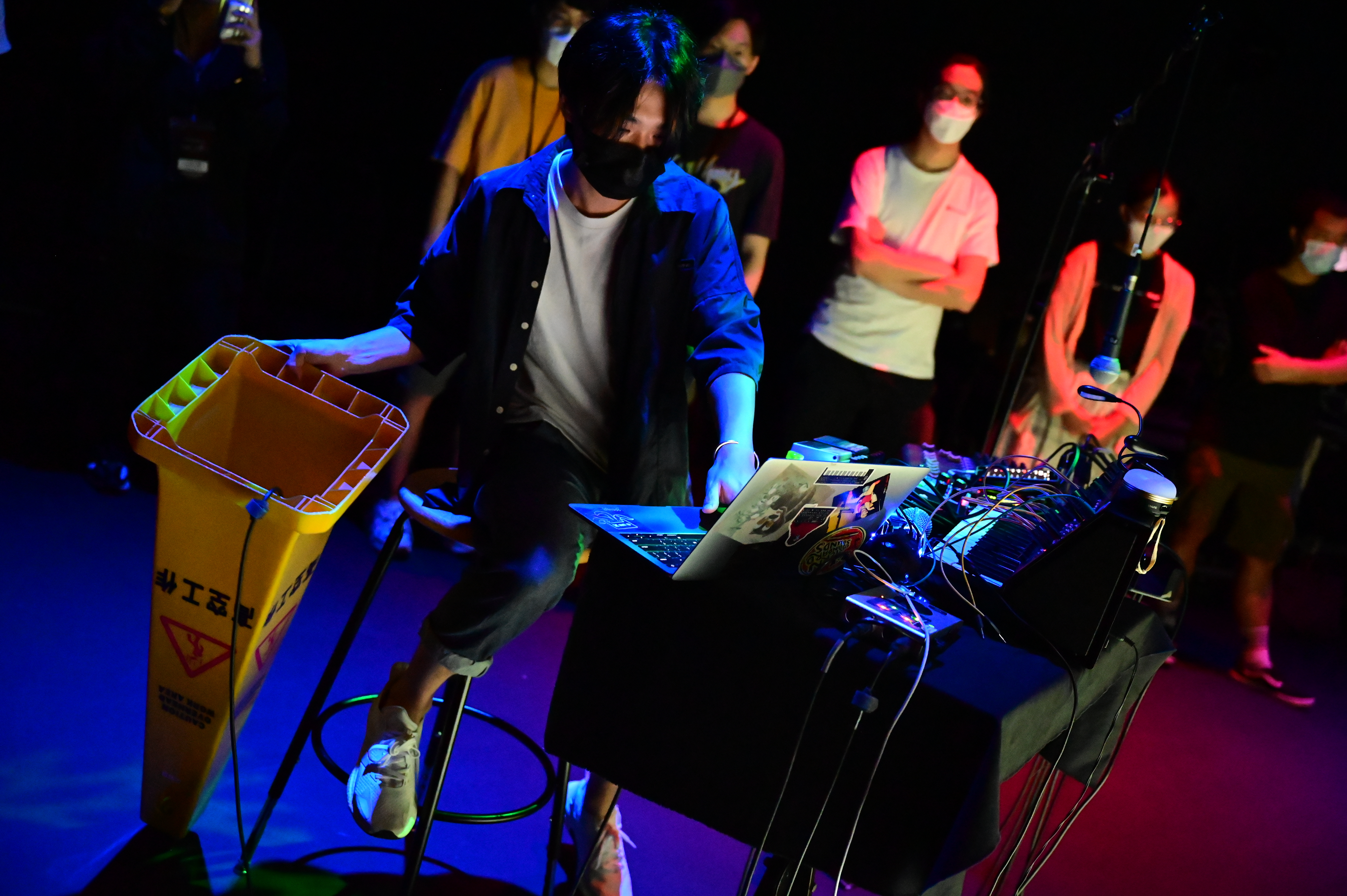
Maintaining the vibrancy of media art
Another interesting aspect of art TALKS tech is that it allowed the artists to revisit and extend earlier works. In their session, Kenny Wong and Jacklam Ho, the two more mature artists in the project, each individually revisited and reinvented one of their past works.
This process is like reactivating memories. Usually, once an event is over, the featured artwork is removed from display, archived and documented. Here, the two artists chose to revisit and re-examine past works employing the same core principles used in the original creations. In this regard, performances and exhibitions like art TALKS tech also help to form a circuit of experimentation for the participating artists. Through trial and experimentation, Wong and Ho made adjustments to their works, and after examining the vectors and hierarchies, were able to reintroduce their pieces as new works responding to the time and space of their occurrence.
New media art highlights locality and adaptability, and demonstrates unlimited variation and potential in different sites of exhibition and performance. Its potential for re-examination and reshaping through the use of technology allows new media artists a high degree of freedom to innovate and experiment with boundaries. Each time a new media artwork is presented in a different site, it brings about a new experience. If artists are asked to reproduce identical installations or artwork, regardless of variations in venue and audience, the energy and vibrancy of new media art is undermined.
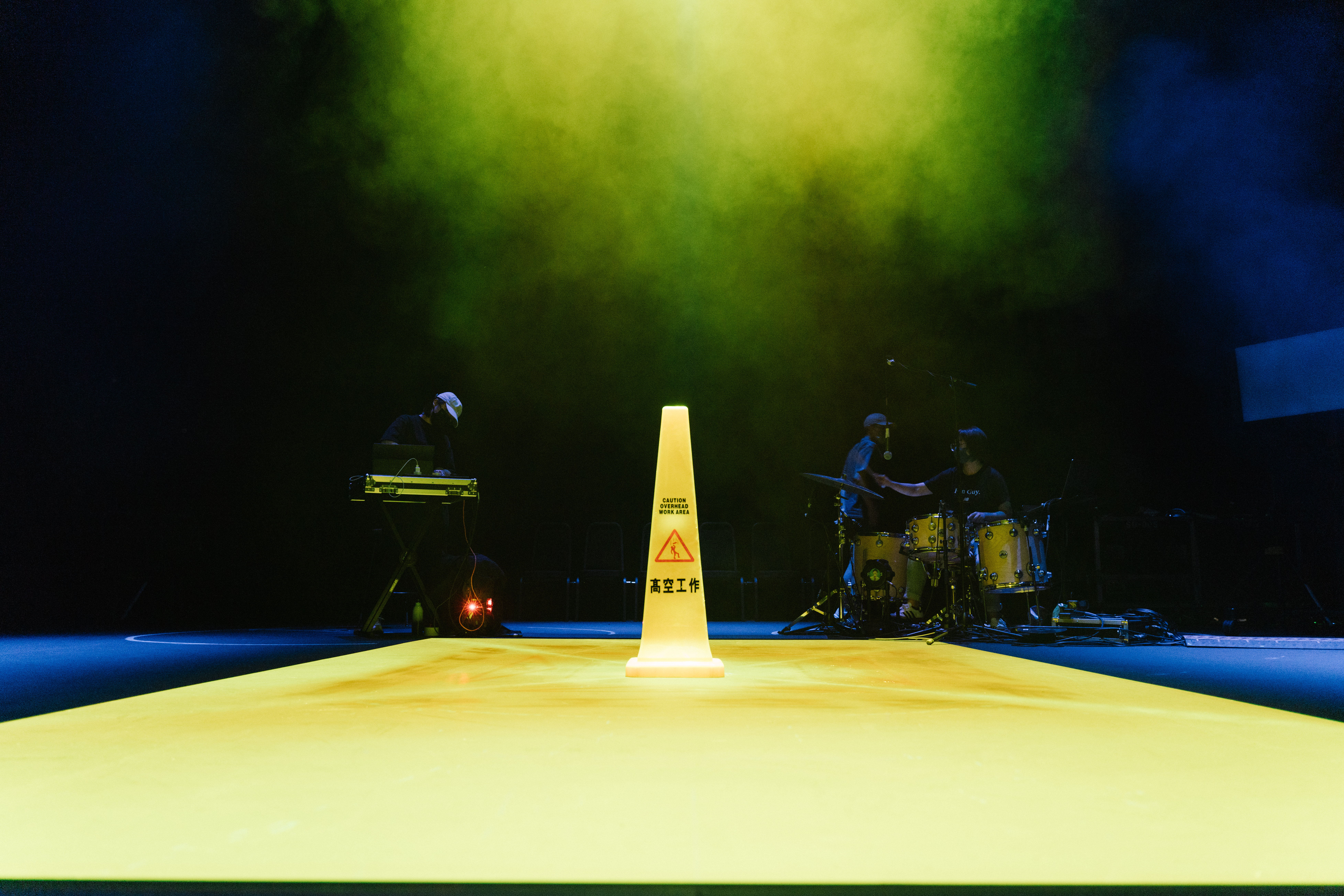
The trend of new media art and the new norm
In response to the “art tech” trend, we must understand that in the creation of cross-disciplinary work, communication is crucial – be it the communication between “art” and “tech”, artists and technicians, or artists and audiences. We must open up our vocabulary and open up the “black box” of new media art, in order to democratise and popularise this art trend.
It is time for us to change the mindset. Instead of trying to “interpret” an artwork for the audience, the focus should be on communication and interaction, so that the public can see how an artwork operates behind the scenes. Artists should create closer circuits of creation – with their teams or even with the audience – to break the dichotomy and boundaries between audience and art, and discover transformative forms of creation that enrich the artistic ecosystem.
In future TechBox projects, we will see more students forming creative teams with mature artists and crew members. I believe that a greater network of conversations and dialogues can be generated, through which students provide new insight to artists, and vice versa. This experiment-based methodology is going to be the new norm for art creation.

